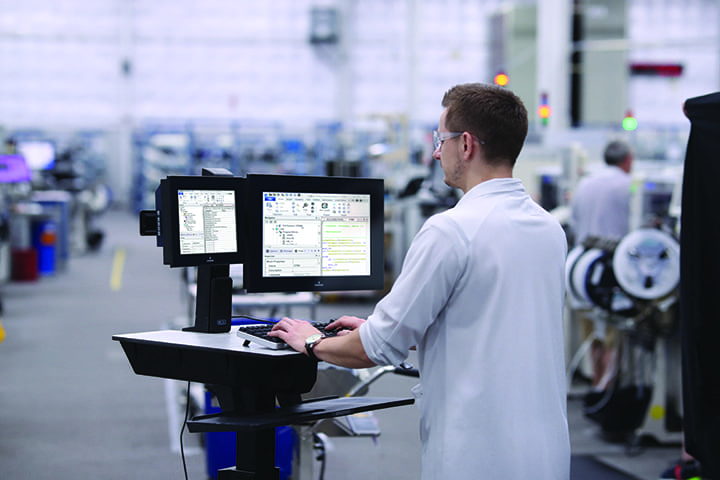As businesses continue to adapt to the fast-paced digital landscape, staff automation has emerged as a crucial strategy for enhancing productivity, efficiency, and employee satisfaction. In 2025, various automation solutions are expected to revolutionize how organizations operate, streamlining tasks and freeing employees to focus on higher-value activities. This article explores the top staff automation solutions that will shape the future of work.
1. WorkForce Sync
WorkForce Sync is a comprehensive automation platform designed for modern businesses. It combines AI-powered tools with modular SaaS architecture, enabling organizations to scale from small teams to large enterprises seamlessly.
Key Features:
- AI-Powered Automation: Automates client communications, staff training, and follow-ups.
- GeoSync Smart: Uses geofencing and facial recognition for attendance tracking.
- Central Intelligence Hub: Offers eLearning, smart document management, and collaborative tools.
Benefits:
By implementing WorkForce Sync, businesses can streamline hiring processes, optimize field operations, and ultimately boost profitability across various sectors, including security and restoration.
2. Zapier
Zapier remains a leading automation tool that connects over 3,000 applications, allowing businesses to create automated workflows called “Zaps.” This solution is ideal for organizations looking to integrate multiple tools without the need for extensive coding.
Key Features:
- Customizable Workflows: Automate repetitive tasks between different apps.
- Real-Time Notifications: Keep teams updated without manual effort.
Benefits:
Zapier significantly reduces the time spent on administrative tasks, enabling employees to focus on more strategic initiatives, ultimately enhancing productivity.
3. Microsoft Power Automate
Microsoft Power Automate, formerly known as Microsoft Flow, continues to be a robust automation solution for businesses using Microsoft 365. It allows users to create workflows that automate processes between Microsoft applications and other services.
Key Features:
- Pre-Built Templates: Facilitates quick setup for common tasks.
- Strong Integration: Works seamlessly with Microsoft products and third-party applications.
Benefits:
This tool enhances productivity by automating routine tasks and ensuring compliance, allowing organizations to operate more efficiently.
4. Trello with Butler Automation
Trello is a popular project management tool that offers automation capabilities through its Butler feature. Users can set up rules to automate routine project management tasks, improving team collaboration and efficiency.
Key Features:
- Visual Task Management: Organize projects using boards, lists, and cards.
- Automation of Repetitive Tasks: Streamline workflows by automating updates and reminders.
Benefits:
By leveraging Trello’s automation features, teams can stay organized and focused, leading to improved productivity and project completion rates.
5. Asana
Asana remains a powerful project management solution that incorporates automation features to help teams manage tasks and projects effectively. It allows users to create automated workflows for task assignments and status updates.
Key Features:
- Customizable Project Templates: Tailor workflows to meet specific needs.
- Integration with Various Applications: Enhance functionality through third-party integrations.
Benefits:
Asana’s automation capabilities reduce administrative overhead, allowing teams to concentrate on delivering high-quality work and achieving project goals.
6. HubSpot
HubSpot continues to be a leading platform for marketing, sales, and service automation. Its robust marketing automation features enable businesses to streamline email campaigns, lead nurturing, and social media management.
Key Features:
- Automated Email Marketing: Personalize content for effective customer engagement.
- Lead Scoring and Nurturing: Automatically track and nurture leads through the sales funnel.
Benefits:
HubSpot helps businesses enhance their marketing efforts by automating routine tasks, leading to more effective campaigns and higher conversion rates.
7. Gusto
Gusto is a payroll and HR platform that streamlines employee management through automation. Its features include payroll processing, benefits administration, and compliance tracking, making it an essential tool for HR departments.
Key Features:
- Automated Payroll Processing: Ensures timely and accurate payments.
- Employee Self-Service: Facilitates benefits management and documentation.
Benefits:
By automating HR functions, Gusto saves time for HR teams, reduces errors, and enhances employee satisfaction.
8. Slack
Slack is a collaboration tool that enhances communication within teams. Its automation features allow users to set up reminders, notifications, and updates, streamlining communication and keeping everyone informed.
Key Features:
- Integrations with Various Applications: Enhance functionality through third-party tools.
- Custom Notifications: Automate reminders for important tasks and deadlines.
Benefits:
By automating communication processes, Slack helps teams stay aligned and informed, improving overall collaboration and productivity.
9. Hootsuite
Hootsuite is a powerful social media management tool that allows businesses to automate their social media campaigns. Its features include scheduling posts, monitoring activity, and analyzing performance.
Key Features:
- Automated Scheduling: Plan and schedule posts across multiple platforms.
- Performance Analytics: Track engagement and optimize strategies.
Benefits:
Hootsuite enables businesses to maintain a strong social media presence while saving time and resources, enhancing overall marketing effectiveness.
10. Alternatives to Zapier
While Zapier is a leading automation tool, alternatives like Integromat (Make), Automate.io, and IFTTT offer similar functionalities. These tools provide businesses with the flexibility to automate tasks across various applications, catering to unique needs.
Key Features:
- Diverse Integrations: Connect multiple applications effortlessly.
- User-Friendly Interfaces: Simplify the process of creating workflows.
Benefits:
Exploring alternatives allows businesses to find the best automation solution that aligns with their specific requirements and budget.
Conclusion
As we move into 2025, the landscape of staff automation solutions will continue to evolve, enabling businesses to operate more efficiently and effectively. From comprehensive platforms like WorkForce Sync to popular tools like Zapier and HubSpot, the options for automating tasks are abundant. Embracing these solutions will not only enhance productivity but also empower employees to focus on high-value activities that drive growth and success. Businesses that leverage staff automation are likely to position themselves for long-term sustainability and competitive advantage.

